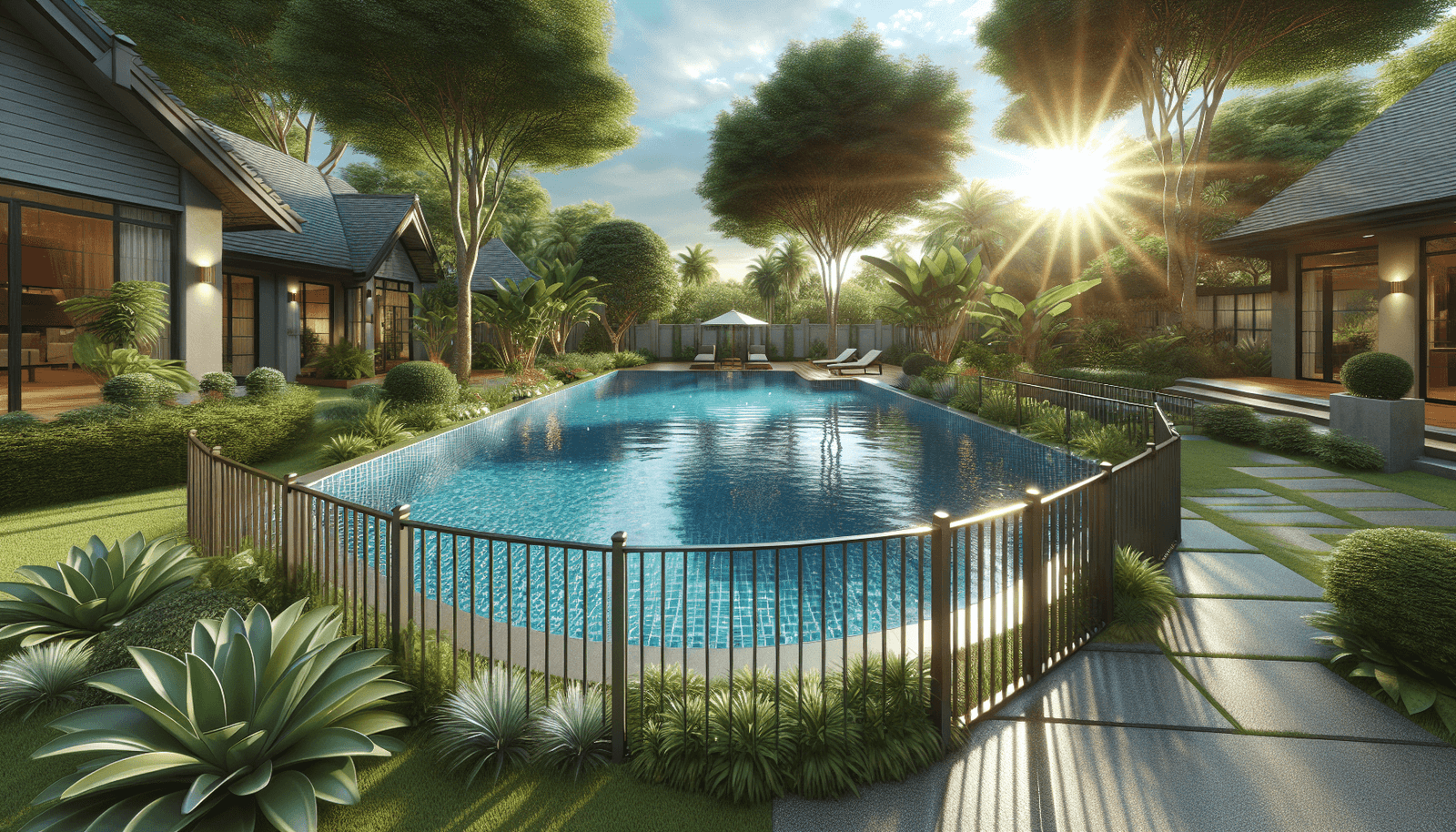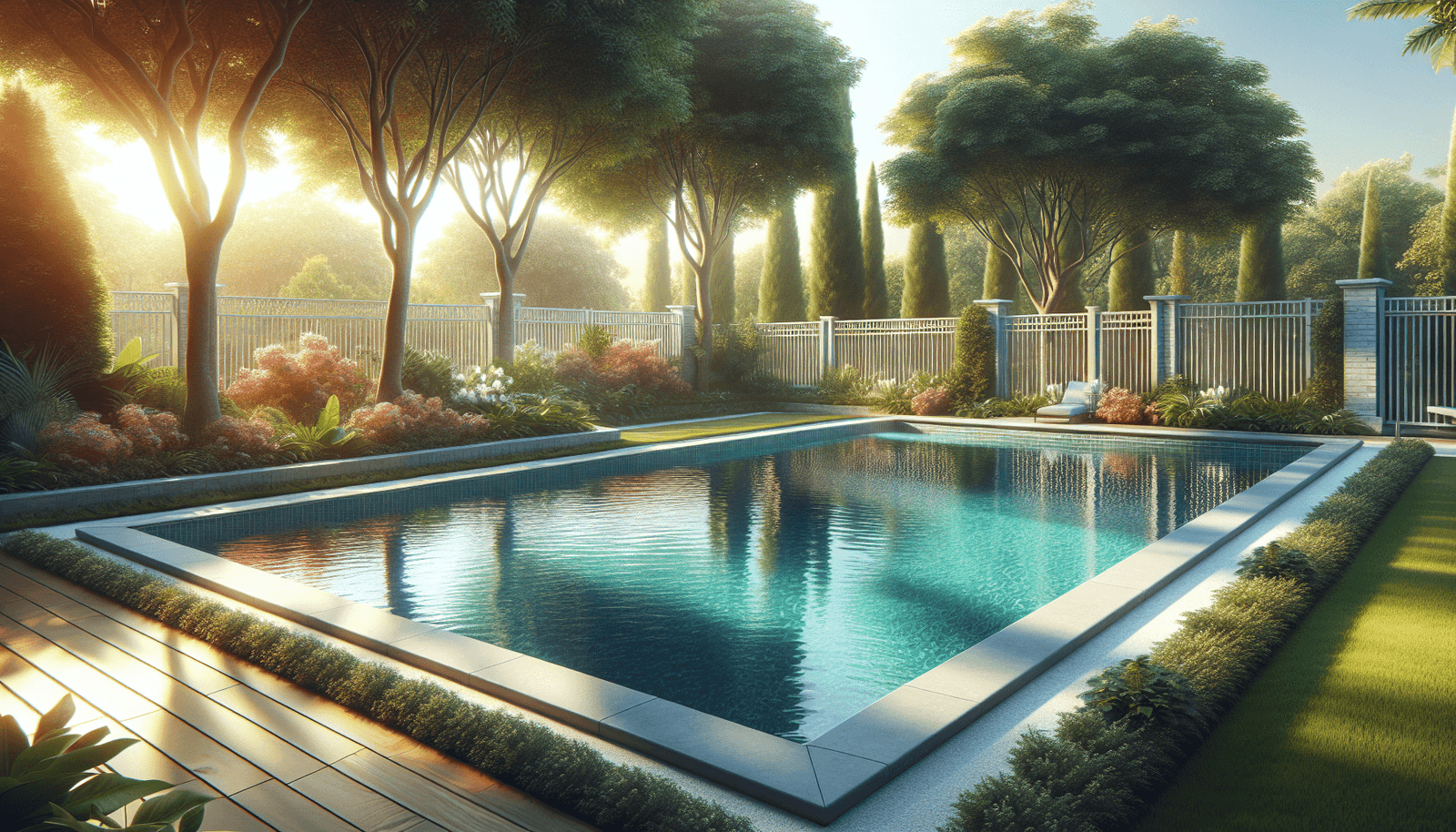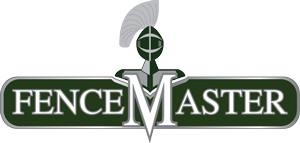
Collaborating effectively with your Homeowners Association (HOA) can lead to a seamless experience in ensuring your outdoor area is up to code. Establishing a suitable fence for pool safety not only promotes security but also shapes the visual appeal of your home.
Fencemaster Houston provides skilled assistance in navigating the compliance guidelines necessary for your project.
Engaging with your HOA requires awareness of their unique standards, which can differ widely among neighborhoods.
A carefully crafted fence enhances both safety for swimmers and overall fence aesthetics, fostering an environment that aligns with regulations while enhancing your property’s charm.
Click here to learn more about: residential.html
Understanding HOA Regulations For Pool Fences: Ensuring Compliance And Safety Measures
The discussions surrounding the visual appeal and safety of your home naturally lead to the importance of adhering to community standards when it comes to pool fencing. A well-designed fencing solution not only safeguards your swimming area but also enhances the overall aesthetics of your property.
Homeowners must remain vigilant about following local ordinances which can greatly differ based on your geographical area. Comprehending barrier requirements goes beyond aesthetics; it plays a vital role in significantly minimizing the risk of accidents, especially those involving children.
HOA regulations often stipulate specific guidelines regarding height restrictions and acceptable fence materials, underlining the need for effective safety measures. For this reason, reviewing your HOA documentation becomes crucial to ensure compliance guidelines and understand liability issues that may arise.
Consulting with professionals for design approval can simplify the installation process and help you align your fencing choices with community standards. Investing in these proactive measures serves to enhance not only the safety of your pool area but also positively influence your property’s value through durable options and visual appeal.

Importance Of Pool Safety Standards: Best Practices For Protecting Your Family
Previous discussions highlighted the significance of following community standards for pool fencing. This directly impacts safety practices. Establishing a secure swimming environment is essential for every household. It requires commitment from each family member.
Implementing safety measures, such as appropriate fence materials and reliable alarms, can significantly minimize accidents around pools. Additionally, staying informed about local zoning laws guarantees that your safety strategies align with community regulations, ensuring compliance guidelines at all levels.
Being involved in the installation process of protective features not only enhances security but also fosters a sense of responsibility within your family. Regular consultations with neighbors provide a great advantage. Sharing safety practices promotes community awareness and vigilance. By emphasizing safety through established standards, families can fully enjoy their poolside experiences while significantly reducing potential hazards.
Pool Safety
- Proper fencing can reduce drowning risks by up to 83% in residential pools.
- Installing pool alarms can alert homeowners to unauthorized access, enhancing safety.
- Regularly reviewing and adhering to local compliance guidelines helps ensure safety.
- Community engagement and shared safety practices can lead to a safer neighborhood environment.
Evaluating Fence Aesthetics In Your Community: Harmonizing Design With Neighborhood Values
Understanding community standards is important. Evaluating your fence design goes beyond personal preference. A fence that fits well with the neighborhood can improve visual appeal, property value, and safety compliance.
Selecting the right fence materials, such as wood or vinyl fencing, plays a key role in aesthetics and durability standards. Each choice has different maintenance standards and lifespan qualities. Knowing these factors is vital for lasting satisfaction.
Using community resources, like local homeowner associations, can offer valuable insights into popular styles and zoning laws. Engaging in neighbor consultations helps to achieve aesthetic harmony and ensures your fencing solutions fit the neighborhood’s character.
By paying close attention to design approval requirements, you can build a fence that clearly marks your property lines while enhancing safety and unity in your community. Involving professionals in the installation process can simplify compliance guidelines and make sure your fence meets necessary construction standards. This approach leads to a functional and attractive result.
Compliance Guidelines For Pool Enclosures: Key Regulations To Follow
Building on previous discussions about aesthetics and community safety measures, understanding compliance guidelines is essential for maintaining a safe environment around your pool. Homeowners must navigate local regulations effectively to minimize risks associated with pool access and ensure safety for both residents and guests.
Each municipality may enforce specific requirements dictating the fence types permitted, along with compliance guidelines for height, materials, and access points. Thorough research into state and local laws reveals variations that might apply, highlighting the importance of staying informed.
For instance, popular materials such as vinyl fencing and wrought iron provide robust barrier options that ensure safety while enhancing visual appeal. Always consult local authorities to confirm adherence to these necessary standards and avoid potential liability issues.
Engaging with your Homeowners Association (HOA) can further help the compliance process, as many HOAs impose stringent HOA regulations concerning the appearance and structure of pool enclosures. Selecting materials that align with both aesthetic preferences and community standards, such as durable chain link options, ensures a harmonious blend of aesthetics and functionality, thus enhancing property value.
Additionally, addressing issues related to access control and gate design is crucial to meet compliance guidelines effectively. Consideration for landscaping around barriers can also contribute to a visually appealing yet safe environment. Frequent neighbor consultation can foster community input and awareness, making a collaborative effort toward achieving safety goals.
Pool Enclosure Safety
- Secure enclosures significantly enhance safety for residents and visitors around pools.
- Local regulations dictate specific requirements for pool fencing, including height, materials, and access points.
- Common materials for pool enclosures, such as vinyl and wrought iron, provide safety and aesthetic appeal.
- Homeowners Associations (HOAs) may have additional guidelines that affect pool enclosure design and materials.
Choosing The Right Residential Fencing: Factors To Consider For Security And Style
A thoughtful selection of fencing complements previous discussions on pool safety and compliance guidelines. It reinforces the importance of security while enhancing your property’s visual appeal. The right barrier is vital in establishing safety measures and aesthetic harmony. This makes it a key consideration for any homeowner.
Begin by evaluating your security priorities. Consider your neighborhood characteristics and community standards. This evaluation will help you decide which fencing materials best meet your needs.
For example, selecting aluminum barriers improves durability and adds a modern touch. When choosing materials, think about how options like vinyl fencing or wrought iron can enhance the aesthetics and functionality of your outdoor space.
Don’t overlook gate design, as it is essential for both access control and maintaining visual impact. Balancing style and security fosters a cohesive outdoor environment that reflects your personal taste while adhering to residential codes.
As you progress, ensure your choices align with local ordinances and compliance guidelines, especially regarding pool regulations. Knowing various barrier requirements keeps you informed about construction standards and improves your project’s success.
Once you’re familiar with the regulations, navigating community standards becomes the next step. Implement strategies to align with HOA regulations. This includes considering landscaping considerations, gate design, and access points to ensure safety barriers integrate smoothly into your property.
Navigating Community Standards Effectively: Strategies For Successful Fence Installation
Understanding community standards is crucial when installing a fence, especially around your pool. These regulations define how to frame your property lines, highlighting the need to follow local guidelines to enhance safety and maintain visual appeal.
Before beginning your installation, familiarize yourself with local ordinances related to height restrictions, fence materials, and design approval. These requirements not only affect the aesthetic harmony of your fencing but also help prevent liability issues that might arise from non-compliance.
Working with your homeowners association is essential to clarify these community standards and aid in securing design approval. Creating a plan that includes durable fence materials, such as vinyl fencing or chain link options, ensures your installation stands the test of time while increasing your property value.
Additionally, landscaping considerations around your fences can improve the visual impact and help integrate barriers into your outdoor environment. Ensuring access control with well-thought-out gate design and adhering to height restrictions not only strengthens safety barriers but also aligns with community standards.
Property Fencing
- Neighborhood guidelines help maintain safety standards and a consistent visual landscape.
- Consulting local regulations can prevent potential liability issues related to fencing installations.
- Collaboration with homeowners associations can streamline the approval process for fencing designs.
- Adhering to durability standards enhances the longevity of the installation and increases property value.
Barrier Requirements For Pool Safety: Essential Features For Risk Management
As we focus on the crucial guidelines surrounding community standards and fencing choices, it’s important to consider specific requirements that ensure a safe swimming environment. Careful consideration of various protective features is vital for minimizing accidents while promoting security for all users.
Many regulations highlight the necessity of adhering to height restrictions, which require barriers that meet specific safety criteria to effectively deter unauthorized access. Pool safety compliance improves when homeowners invest in residential fencing options that fulfill both safety and aesthetic needs.
Homeowners frequently seek maintenance-free options, like vinyl fencing, ensuring their spaces remain beautiful and secure without extensive upkeep. A carefully designed enclosure not only meets safety standards but also promotes aesthetic harmony within your landscape, enhancing overall property value.
Routine inspections and proper upkeep are essential to maintain compliance guidelines, ensuring your pool remains a safe haven for family and friends. Engaging with local governing bodies about local ordinances is a proactive step in aligning your fencing solutions with neighbor consultation and expectations.
As you finalize your plans for installing pool enclosures, understanding the design approval processes is critical. Active participation in HOA meetings and consultations can clarify necessary steps, making the installation process smoother while ensuring adherence to height restrictions, material selection, and gate design requirements.
Design Approval Processes With Your HOA: Steps To Achieve Approval For Your Fencing Project
With a firm understanding of community standards and the importance of pool safety in place, the focus turns to the design approval processes governed by your homeowners association (HOA). Knowing how to navigate these rules can greatly enhance your project’s success.
Investigate Guidelines
Start by researching the guidelines that dictate fence installations within your community, paying particular attention to restrictions regarding height, materials, and colors. Emphasizing compliance with these HOA regulations not only aligns your project with aesthetic harmony but also helps avoid potential liability issues.
Prepare Documentation
A well-prepared fence design that follows these standards while enhancing your property’s curb appeal is crucial. Collecting necessary documentation, such as fencing permits or design consultations, will further support your application, showing your commitment to adhering to residential codes.
Engage with HOA Representatives
Connecting with HOA representatives can offer valuable insights and guidance, helping to prevent potential issues in the approval process. Establishing good relations can also involve neighbor consultation, which may be essential depending on your local ordinances.
Maintain Communication
After submitting your application, keeping an open line of communication is key to staying updated on the approval status. Clear and consistent dialogue can ease concerns and may speed up the process, allowing for a quicker timeline for project management.
Installation and Compliance
Once you receive approval, ensure the installation aligns with any remaining community standards, whether involving barriers for pool safety, privacy fences, or specific gate designs. Following these requirements not only solidifies your commitment to safety but also maximizes the visual impact and durability of your new fencing.
Key Takeaways for Fencing Projects
- Understanding HOA guidelines can prevent delays in project approval.
- Compliance with local ordinances ensures that your fence meets community standards.
- Effective communication with HOA representatives can resolve potential issues early.
- Proper documentation strengthens your application and demonstrates preparedness.
Exploring Fence Materials For Longevity: Selecting Durable Options For Your Property
The choice of fencing materials is vital for both durability and visual appeal. Homeowners should assess various options to find materials that can handle local weather while also meeting maintenance standards.
Many homeowners look to their HOA regulations for approved materials. This ensures that selections align with personal taste and community standards. Understanding the advantages and disadvantages of different materials can help you make choices that enhance both aesthetic harmony and longevity.
Wood fences provide a warm, natural look but require ongoing upkeep to avoid issues like decay and insect damage. On the other hand, vinyl fencing is a popular choice. It needs minimal maintenance and resists color fade and cracking, making it practical for busy homeowners.
Metal fencing, such as aluminum barriers and wrought iron, offers exceptional durability against harsh weather. Homeowners must be cautious about rust prevention to ensure these materials last. Consulting local suppliers for expert advice on suitable metal types can improve your fencing project.
Chain link options may provide affordability and easy installation, but they sometimes lack the visual appeal of more solid barriers. By considering landscaping considerations and how they fit with existing structures, you can create a look that enhances your property lines.
Investing in high-quality materials is crucial for maximizing visual impact and overall property value. Whether you choose DIY methods or professional installation, it’s important to ensure your fence meets durability standards and complements your home’s style, contributing to a satisfactory living environment.
Managing Neighbor Consultation For Fencing Projects: Building Positive Relationships In Your Community
Enhancing property lines often involves not just following HOA regulations but also fostering strong relationships with your neighbors. Engaging in meaningful discussions about your fencing project is essential in creating goodwill and understanding within your community.
Before starting, ensure your design follows local residential codes. This involves confirming that height restrictions and fence materials meet community standards. Discussing your choices, such as vinyl fencing or wrought iron, can help address any concerns about aesthetics and functionality.
Neighbors appreciate knowing both the visual impact and practical aspects of your project. Early communication allows you to address worries effectively, such as how the design aligns with barrier requirements and landscaping considerations. Sharing details about the installation process and how it may alter their view can build trust and lessen resistance.
Building these relationships not only streamlines the approval process but also nurtures a sense of community that enhances everyone’s experience. Engaging in neighbor consultation promotes open dialogue that can result in valuable feedback and community input, benefiting your project and increasing overall property value. Participation in HOA meetings or utilizing consultation services offers clearer expectations regarding compliance guidelines and project outcomes.
Options For Temporary Pool Fences During Construction Or Repairs With Fencemaster Houston
Decorating And Landscaping Around Your Pool Fence With Fencemaster Houston


